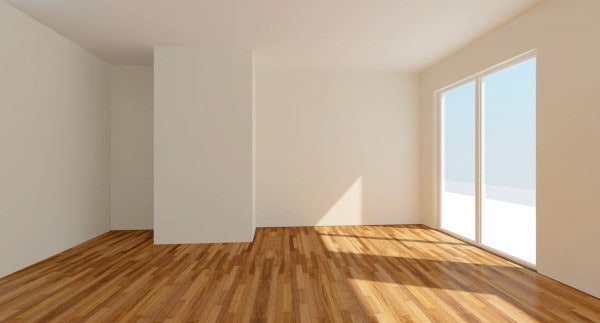Hammocks are most popular for their use outside because they’re typically hung between two trees.
But did you know that you can also hang hammocks inside your home? It’s pretty simple to do because it can be done from virtually any ceiling. Hammocks can also be hung from your porch, bedroom, or sunroom.

In fact, you might even be surprised at how comfortable hammocks are for sleeping!
So whether you’d like to hang a rope hammock indoors for naps, a relaxing nook to read, or even for sleeping, in this guide we’ll walk you through the materials needed and steps you need to do in order to safely hang a hammock from your ceiling.
Table of Contents
Materials Needed
With the help of a few high-quality materials, you’ll easily be able to hang a hammock from the ceiling or walls in your home.
Here’s what you’ll need:

Heavy-duty hardware suspension: J-hooks, s-hooks, screw eyes, and eye bolts are necessary for securing anchor points in ceiling joists as well as wall beams. Additionally, these types of hardware can also help secure hammocks properly between two posts.
Using hardware suspension means you’ll need to look for a secure support spot within your home but this is easy enough with the help of a stud finder. Keep in mind that you should avoid using metal studs because anchoring heavy things on metal studs risks compromising the stud when it bends.
As a result, the studs can leave structural damage and as we know, these types of repairs can be very expensive. This is why we always recommend using wooden studs to hang your hammock from the ceiling.
Cords and ropes: Cords and ropes may be widely used to hang hammocks in the outdoors between trees, but they’re also efficient for hanging your hammock from the ceiling
As long as you know how to tie a secure knot, using cords and ropes are simple and effective enough. But if you aren’t confident in your knot-tying skills, it may be best to work with chains for suspension of your indoor hammock.
Chains: Chains are a reliable and secure way of suspending your hammocks; as a plus, they can easily be adjusted when you use s-hooks.
These s-hooks can be moved up and down from the chain whenever you need to adjust it. Another major advantage of using metal chains is that they are strong and durable. You can relax on your hammock without having to worry about them breaking from wear and tear over time.
Other materials to help you get started:
Safety Considerations
Hanging your hammock from the ceiling is an inexpensive way to relax indoors.
No matter which room you end up placing your indoor hammock in when done properly can easily turn into your most enjoyable spot at home. However, when this isn’t done correctly, it can be dangerous.

You should never hang a hammock from a drywall only; this is why it’s of critical importance to locate the stud behind drywalls then drill here only. It also helps to make sure that you use materials of the highest quality, ensuring that they can support at the very least 300 pounds.
Embarking on a DIY project to hang a hammock from your ceiling is one of the many times you shouldn’t be cutting corners on your expenses. Don’t use rusty screws that you found lying around in your garage, and stay away from flimsy chains.
Here are other safety tips to take into consideration:
- 1Distance between two points: Inspect your room the way you would two trees before hanging your hammock. The points should not be too far apart that your hammock ends up being an awkward, high length that is far from relaxing. The distance between two points should be just right not just for comfort but for easy accessibility too.
- 2Height: The height of your attachment points can be determined based on the length of your chain, room dimensions, and hammock size. Here’s a helpful tip: the closer the eye hooks are to one another, the higher your hammock should be.
- 3Sag length: Sag refers to the curve of your hammock. How much sag it has is determined by how far each end of the hammock is from one another when it has been installed. This space, known as ridgeline length, should ideally be around 9 feet, which gives you allowance for the sag.
- 4Tension weight limits: Once you’ve installed the hammock hardware into the studs and hung the chains, test its tension weight limits by giving it a strong tug. We recommend doing this test at least three times to make sure they’re strong enough.
- 5The final test: Finally, when everything is in place, it’s time for the final test! Add weight into your hammocks such as books to test its safety and durability. If the results are satisfactory, you can now get into the hammock and enjoy it!
Installation Instructions
It’s now time to get your hands dirty and install the hammock!
Once you know exactly where in your home you’d like to hang your indoor hammock from, follow these 10 simple steps:

- 1Use a stud finder to locate the ceiling joists, then use a pencil to mark its center as accurately as possible.
- 2Drill, using a small bit, a hole into the joist. Once you’ve hit solid wood, the bit should have some wood shavings.
- 3Use the measuring tape to measure the distance between the two anchor points. The right distance would depend on the length of your hammock, and how much sag you want it to have. It also helps to consider the height of your hammock once hung. Ideally, the hammock should be 18 inches high from the floor.
- 4Locate the center of the joist for the second anchor point. Drill another small hole here.
- 5Drill pilot holes that are ⅜ of an inch long into each anchor point.
- 6It’s now time to screw in the eye bolts. They should be long enough to allow 2 inches properly screwed into the wood joists.
- 7Install the chains, cord, or rope to each of the hammock’s end loops based on your desired sag and length.
- 8Attach these suspensions into the eye-bolts or anchored hooks using carabiners or knots.
- 9Adjust suspension length so that you get the desired sag and length of the hammock for maximum comfort and functionality.
- 10Test your hammock by sitting and lying down on it.

Frequently Asked Questions
Can I hang a hammock from my brick or cement wall?
Yes you can, and it’s easy to do so, too!
All you need to do is to drill holes into the wall, insert pins, screw the hangers in, and from there you can already hang your hammock. If you have a very solid brick or cement wall, a 4-bolt wall hook is recommended for added stability and strength.
We understand that not everyone has a solid brick or cement wall, though.
But that doesn’t mean you can’t hang your hammock from it either. Just make sure to use screws that are made to penetrate much deeper into the wall. Hanging the hammock will also require the use of carabiners, ropes, eye-bolts, and pins.
If you prefer to keep it simple, then you can also attach it using a handle and keep it low.
If I have a false ceiling can I still hang a hammock?
There are ways to go about it depending on the kind of false ceiling you have.
For plaster ceilings, working with the lath and plaster aren’t enough to support the weight of a human adult. For a drywall ceiling, take note that it will almost immediately crack and break even if it’s bearing just the weight of a child on a hammock.
Hanging a hammock from a plaster ceiling will require locating a ceiling joist although the quickest and most efficient way to do this is by ensuring you have access to the attic (if the room is located beneath it). From the attic above, you can then mount your hammock.
But if you are working with a drywall ceiling, finding a ceiling joist should be simple enough. Any stud finder should be able to do the job quickly.
What’s the best room in my house to hang a hammock in?
It depends. While hammocks can transform pretty much any living space, it can’t be installed in just any room.
The answer really depends on how you envision using your hammock. Is it meant to be used as a reading nook, for napping, for kids to play? Hammock functionality has an important role to play in helping you determine the best place to hang your hammock indoors.
Conclusion
Indoor hammocks are an inexpensive luxury that everyone can enjoy from the comfort of your own home.
They are relaxing alternatives to a chair or couch, perfect for winding down after a day of work or for getting naps in. Indoor hammocks are easy to install, just make sure that you follow these steps especially when it comes to safety considerations.
Resources:
Home Repair Tutor

